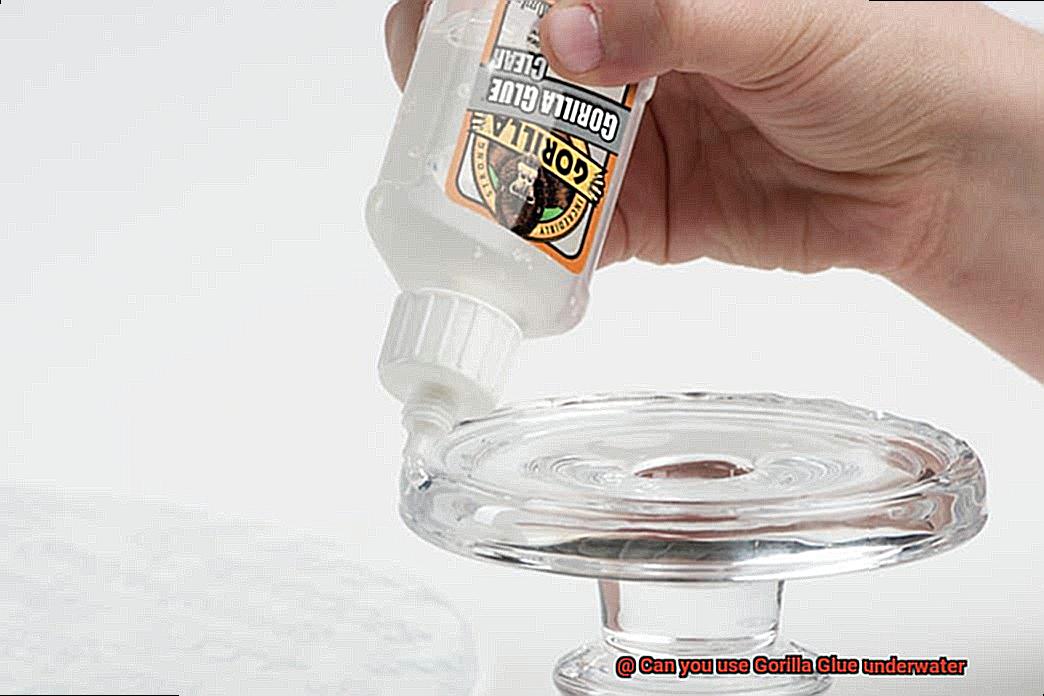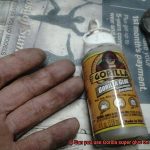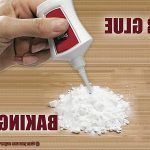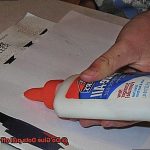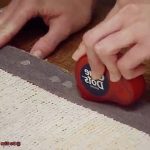Ever found yourself in a sticky situation underwater, desperately seeking a solution to fix that leaky pipe or mend your beloved aquarium? Well, fear not, my fellow aquatic adventurers, for we are about to embark on an epic exploration into the realm of Gorilla Glue beneath the waves.
In this blog post, we’ll plunge into the depths of possibility and unravel the mysteries surrounding this mighty adhesive’s ability to conquer underwater challenges.
Brace yourselves as we uncover the secrets behind this highly sought-after glue and determine whether it possesses the strength and tenacity required to triumph over your next aqueous undertaking. Prepare to dive headfirst into a world where adhesion reigns supreme – let’s make waves with Gorilla Glue.
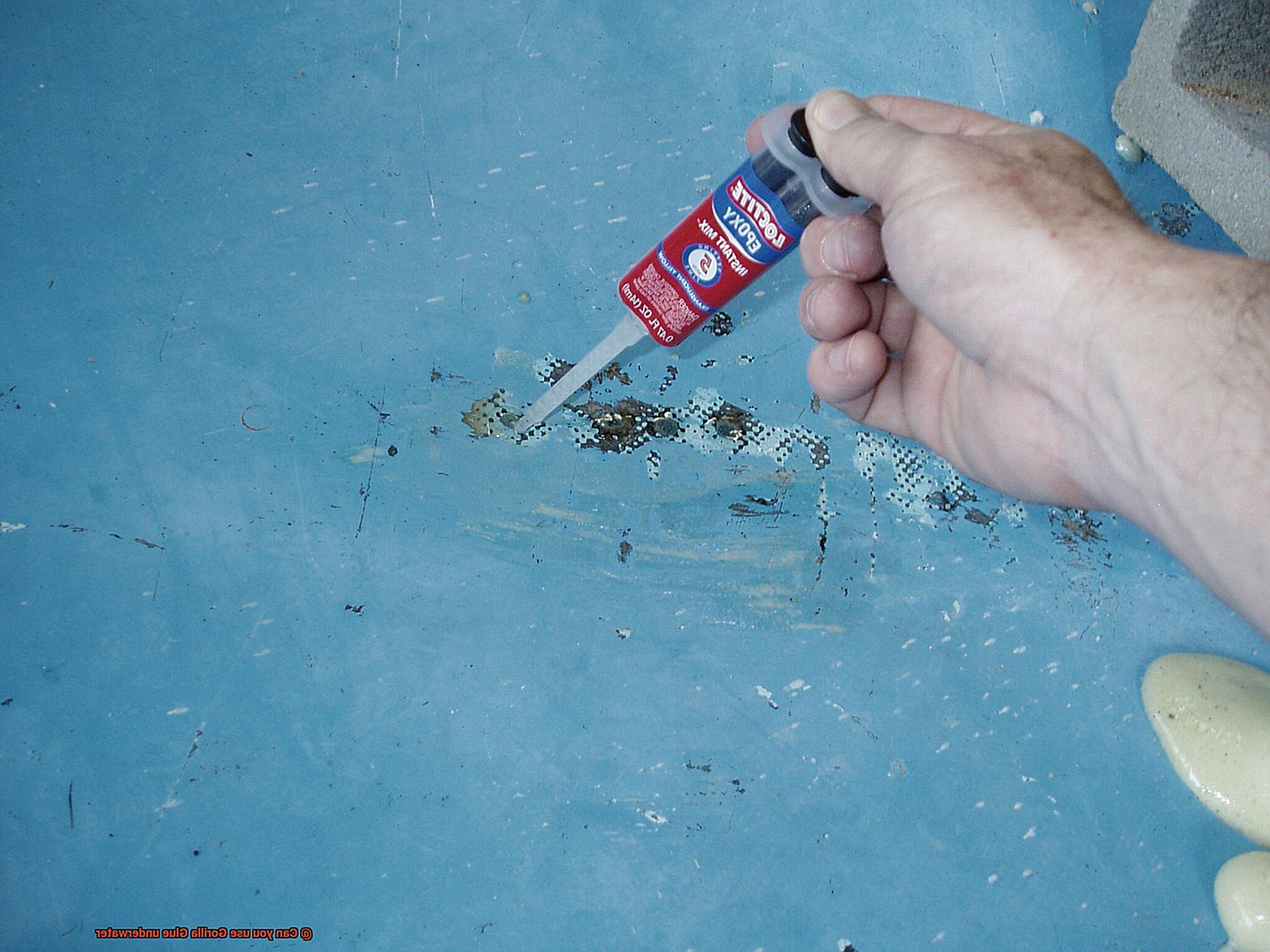
Is Gorilla Glue Suitable for Underwater Use?
Contents
- 1 Is Gorilla Glue Suitable for Underwater Use?
- 2 Preparing Surfaces Before Bonding
- 3 Applying Gorilla Glue Underwater
- 4 Challenges of Using Gorilla Glue Underwater
- 5 Tips to Improve Success When Using Gorilla Glue Underwater
- 6 Curing and Securing the Bonded Materials
- 7 Inspecting the Bond After Curing
- 8 Alternatives to Using Gorilla Glue Underwater
- 9 Conclusion
Gorilla Glue, a renowned adhesive celebrated for its strength and versatility, is subject to intense scrutiny when it comes to underwater applications. In this in-depth analysis, we will explore the properties of Gorilla Glue, dissect the challenges it faces in submerged conditions, and present alternative adhesives specifically designed to conquer the depths.
Understanding Gorilla Glue:
Gorilla Glue, a polyurethane adhesive, forges a formidable bond by expanding and creating a foam-like structure upon contact with moisture. Though it becomes water-resistant upon complete curing, it is not engineered for underwater use.
Challenges of Using Gorilla Glue Underwater:
- Weakened Bond: Prolonged exposure to water during the curing process can compromise the adhesive’s strength, undermining its efficacy as a bonding agent.
- Expansion and Foaming: The reaction between Gorilla Glue and moisture triggers excessive expansion, resulting in uneven surfaces and potential gaps that hinder its performance beneath the waves.
- Unique Environmental Factors: The water’s pressure, temperature fluctuations, and contaminants present in underwater environments exert detrimental effects on the glue’s effectiveness.
Alternative Adhesives:
Fortunately, there exist adhesives meticulously formulated to thrive underwater, surpassing Gorilla Glue’s capabilities in submerged conditions. These specialized adhesives are crafted to withstand the perils posed by water and bestow unwavering bonds in wet settings.
Tips for Successful Underwater Bonding:
- Surface Preparation: The thorough cleansing and drying of surfaces slated for bonding are paramount before any adhesive application takes place.
- Proper Application Techniques: Strict adherence to the manufacturer’s instructions regarding adhesive application ensures optimal coverage and contact between surfaces.
- Immobilization: To facilitate complete curing, employ clamps or weights to secure the bonded materials in place until the adhesive sets.
- Inspection: Once the adhesive has cured, scrutinize the bond diligently for any signs of weakness or failure, reinforcing it if necessary.
Preparing Surfaces Before Bonding

Before you take the plunge, it’s crucial to properly prepare the surfaces that will be bonded. Whether you’re fixing a leak in your pool or repairing a broken underwater decoration, following these steps will ensure a strong and durable bond with Gorilla Glue.
- Clean the Surfaces: The first step is to make sure the surfaces are squeaky clean. Dirt, grease, oil, or other contaminants can interfere with the adhesive’s ability to create a strong bond. Grab a mild detergent or soap, mix it with water, and give those surfaces a good scrub. For those stubborn stains or residues, use a gentle scrub with a soft brush to ensure a pristine surface.
- Remove Loose Material: Next on the list is removing any loose material. Paint, rust, or old adhesive residue can prevent proper adhesion and weaken your bond. Take a scraper, some sandpaper, or a wire brush and get rid of that pesky loose material. You want a smooth and clean surface for optimal bonding.
- Smooth Rough Surfaces: Rough surfaces don’t allow for proper contact between the adhesive and the material, resulting in weaker bonds. If the surfaces you’re bonding are rough or uneven, it’s essential to smooth them out. Grab some sandpaper or a file and gently smooth out any rough areas to create a more even surface.
- Dry Thoroughly: Moisture can affect the adhesive’s ability to bond effectively, so make sure there’s no water or residual moisture present. Let the surfaces air dry or use a clean cloth to wipe away any remaining moisture. A bone-dry surface is crucial for achieving a strong bond.
- Roughen Non-Porous Surfaces: If you’re working with non-porous materials like glass or metal, you may need to roughen the surface slightly to enhance adhesion. Grab some sandpaper or a fine-grit abrasive pad and gently sand in a circular motion. This creates a slightly rough texture that improves the bond strength.
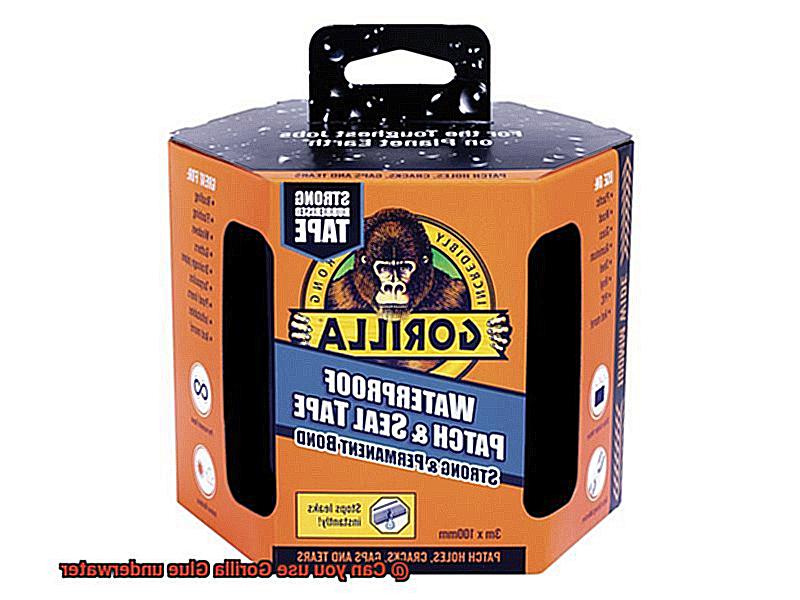
By following these steps and properly preparing the surfaces before bonding, you can maximize the effectiveness of Gorilla Glue, even underwater.
But keep in mind that Gorilla Glue may not be suitable for all underwater applications, considering factors like water pressure, temperature, and specific materials being bonded.

Always test it in a controlled environment before tackling critical or high-stakes projects.
Applying Gorilla Glue Underwater
Gorilla Glue is renowned for its impressive adhesive strength and versatility in various applications. However, the question often arises: can Gorilla Glue work its magic underwater? In this article, we will explore the science behind Gorilla Glue’s strength, the problems with underwater application, and alternative options for bonding underwater.
The Science Behind Gorilla Glue’s Strength:
Gorilla Glue’s adhesive properties are activated by moisture, which triggers a chemical reaction that creates a powerful bond. When Gorilla Glue comes into contact with water, it expands and forms a foamy substance that enhances its strength. This expansion process requires access to both air and moisture.
The Problem with Underwater Application:
While Gorilla Glue’s expansion mechanism works wonders in normal conditions, it falls short when submerged in water. Underwater application denies the glue the necessary air and moisture to activate its full potential. As a result, applying Gorilla Glue underwater can lead to weak bonds or even complete failure of the adhesive.
The Warning Label Speaks Volumes:
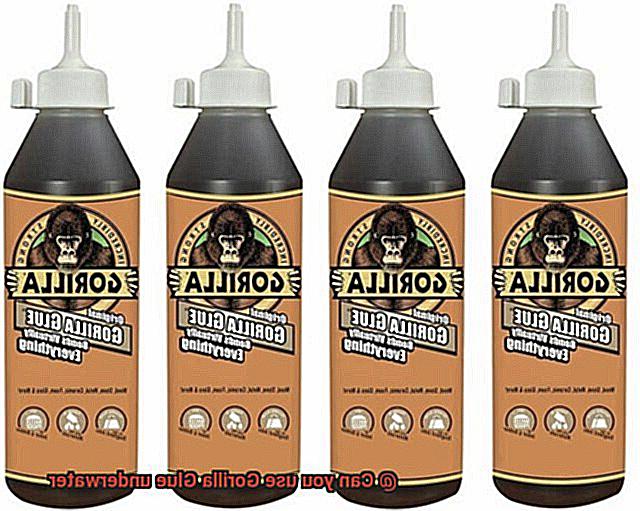
Gorilla Glue’s packaging contains a clear message stating that it is not intended for underwater use. This explicit warning is designed to ensure user safety and prevent potential mishaps caused by weak bonds. It is essential to heed this warning and consider alternative options for underwater applications.
Exploring Specialized Alternatives:
To achieve strong and reliable bonds in submerged conditions, it is wise to explore adhesives specifically formulated for underwater use. Marine-grade or underwater epoxy glues are engineered to bond effectively in underwater environments, even without air and moisture. These specialized alternatives are designed to withstand water pressure and temperature variations, ensuring long-lasting and reliable bonds.
Challenges of Using Gorilla Glue Underwater
Gorilla Glue has earned its reputation as a reliable adhesive for various applications, but when it comes to using it underwater, there are unique challenges to overcome. In this post, we will explore the properties of Gorilla Glue and the underwater environment, uncovering the obstacles that hinder its effectiveness beneath the waves.
The Moisture Conundrum:
Water, water everywhere. While Gorilla Glue is water-resistant, submerging it underwater poses a significant challenge. The glue’s curing process relies on moisture in the air to activate and bond properly. However, excess moisture underwater can hinder the drying process and compromise the bonding strength. This lack of air moisture required for optimal curing means that using Gorilla Glue underwater may not provide the desired results.
Dilution Dilemma:
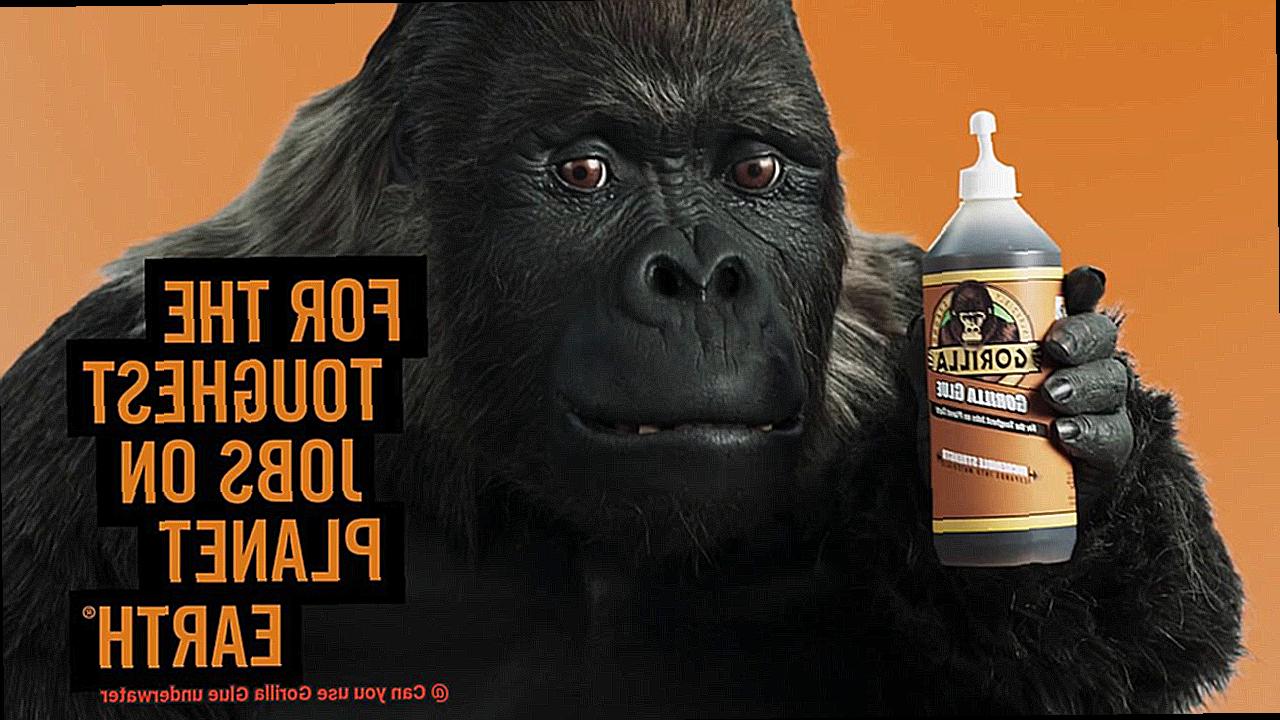
When Gorilla Glue encounters water, it can become diluted, resulting in reduced adhesion strength. The weakened bonds may fail under certain conditions or deteriorate over time. This dilution effect is especially pronounced in highly submerged environments where water permeates every nook and cranny.
Application Hurdles:
Applying Gorilla Glue accurately underwater can be like trying to paint with watercolors during a rainstorm. The glue’s viscosity is affected by water, making it harder to control and apply evenly. Uneven or insufficient coverage can lead to weak bonds that are prone to failure.
Adhesion Barriers:
Underwater surfaces are notorious for being covered in algae, dirt, or other contaminants that act as barriers between the adhesive and the surface. These substances prevent proper bonding and compromise the glue’s efficacy.
Pressure Problems:
As you descend deeper underwater, the pressure increases, and so do the challenges for Gorilla Glue. High pressure can squeeze out the adhesive or cause it to dislodge from the surface before it has had a chance to bond securely. This makes it difficult for Gorilla Glue to withstand the forces exerted in deep-sea environments.
Exploring Alternatives:
While Gorilla Glue may not be suitable for underwater applications, fear not. There are specialized adhesives designed explicitly for bonding underwater. These alternatives overcome the challenges mentioned above, ensuring reliable and durable bonding even in wet environments.
Tips to Improve Success When Using Gorilla Glue Underwater
Dive into the fascinating world of glue with us. If you’ve ever wondered how to achieve success when using Gorilla Glue underwater, then look no further. In this blog post, we’ll share some expert tips to help you become a pro at bonding materials underwater. Get ready to make a splash with your glue skills.
Clean and Prepare
The path to a strong bond begins with cleanliness. Before you start, make sure to scrub the surfaces you want to glue until they’re squeaky clean. Don’t let any dirt or grease get in the way of a mighty bond. For an even better grip, roughen up the surface using sandpaper or a file.
Wet it Up
Underwater bonding requires a little moisture magic. Activate the glue by wetting both surfaces that need to be bonded before applying Gorilla Glue. This will ensure that the glue sticks like a champ underwater. Remember, Gorilla Glue loves water.
Don’t Go Overboard
Less is more when it comes to applying Gorilla Glue underwater. Apply a thin layer of glue on one surface only. Avoid using too much glue as it can float away or spread too thin, resulting in a bond weaker than a fish’s handshake.
Press and Hold
Once the glue is applied, bring the wet surfaces together quickly and hold them firmly. Apply even pressure across the entire bonded area for a strong hold. Use clamps or other tools to keep everything in place until the glue cures.
Patience is Key
Now it’s time to unleash your patience and let the magic happen. Gorilla Glue typically takes around 24 hours to fully cure, so be patient and resist the urge to disturb the bond underwater. No cannonballs or belly flops allowed.
Inspect and Reinforce
After the glue has cured, inspect the bond for any weak spots. If needed, apply additional layers of Gorilla Glue to reinforce the bond and make it even stronger. A little extra glue goes a long way.
Curing and Securing the Bonded Materials
Curing and securing bonded materials is an art that requires finesse, especially when venturing into the depths with Gorilla Glue. In this captivating journey, we will explore the intricacies of underwater adhesive applications, uncovering techniques to ensure a strong and durable bond. So, strap on your snorkels and prepare to dive into the realm of glue mastery.
Curing is a vital step in any adhesive process, and Gorilla Glue is no exception. This powerful adhesive requires sufficient time to dry and harden properly. However, when using Gorilla Glue underwater, patience becomes even more essential. The presence of water can slow down the curing process, necessitating ample time for the bond to fully develop its strength.
Securing materials underwater may seem like an insurmountable challenge, but fear not. We have a few tricks up our sleeves. One option is to employ clamps or weights to hold everything together while the adhesive cures. This method ensures a robust bond, even in the face of water resistance. However, be mindful that these clamps do not disrupt your alignment game.
If clamps aren’t your style, waterproof tapes or wraps can come to the rescue. These provide additional support and apply pressure during the curing process, enhancing the bond’s integrity. Remember to select tapes compatible with Gorilla Glue that won’t compromise its adhesive properties.
But let’s push the boundaries of creativity. If securing materials underwater feels like an impossible feat, why not construct a temporary enclosure around the glued area? Utilize waterproof barriers such as plastic sheets or bags to maintain pressure and shield against water interference. It’s an innovative solution that keeps your bonding mojo intact.
However, let’s keep it real for a moment. Despite these expert techniques, it’s crucial to acknowledge the limitations of underwater bonding with Gorilla Glue. Water can impact adhesive properties, while variables like temperature and exposure may influence the bond’s longevity.
In conclusion, my fellow glue aficionados, curing and securing bonded materials with Gorilla Glue underwater is essential for achieving a robust and enduring bond. Armed with this newfound knowledge, plunge into the depths of adhesive mastery, making a splash with your aquatic glue skills.
Inspecting the Bond After Curing
Today, we embark on an exciting journey into the realm of Gorilla Glue, unraveling the significance of inspecting the bond after curing, particularly when utilizing it underwater. So grab your snorkels, for we are about to dive deep.
Underwater bonding necessitates a thorough evaluation of Gorilla Glue’s efficacy to ensure a robust and trustworthy bond. Let’s explore the key factors to consider during the inspection process:
- Bond Security: Apply gentle pressure to the bonded area, watching for any signs of movement or separation. A firm and secure bond indicate a successful adhesive application, providing peace of mind in the strength of the connection.
- The Beauty in Appearance: Pay close attention to the bond’s surface. It should boast a smooth and even texture, signifying proper adhesion. Rough or uneven areas may imply inadequate bonding, compromising the bond’s overall strength.
- Clues in Color: Gorilla Glue typically dries to a light tan or brown shade. Deviations in color could indicate uneven application or insufficient coverage, giving valuable insights into the effectiveness of the bonding process.
- Put It to the Test: Subject the bond to physical tests by applying pulling or twisting forces. If it withstands these stressors without breaking or showing any weaknesses, you’ve achieved an unyielding and dependable connection.

It is important to note that although Gorilla Glue is renowned for its exceptional strength and versatility, its performance underwater can be influenced by water pressure and temperature. Thus, inspecting the bond after curing becomes even more vital when using Gorilla Glue underwater.
Dear glue enthusiasts, through meticulous examination of bond security, appearance, color consistency, and rigorous physical tests, you can rest assured that Gorilla Glue has effectively bonded those submerged surfaces. This inspection process guarantees a durable and robust bond, capable of withstanding the challenges posed by underwater environments.
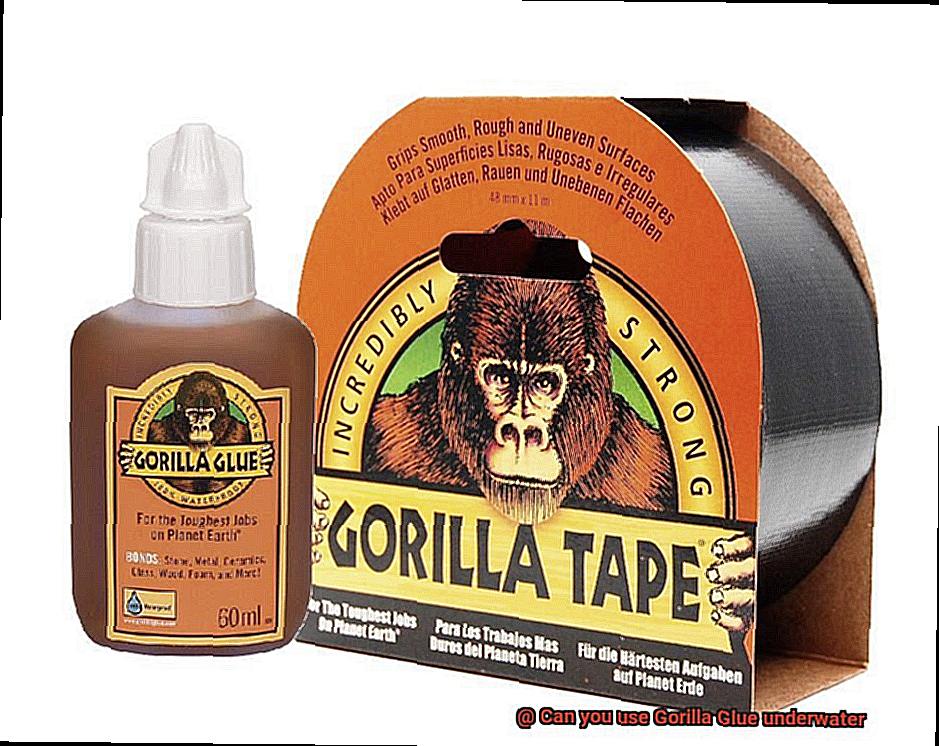
Remember, mastering the art of inspecting bonds after curing is the key to unlocking the full potential of Gorilla Glue underwater. So go ahead, make a splash with your adhesive skills, and let your underwater projects shine.
Alternatives to Using Gorilla Glue Underwater
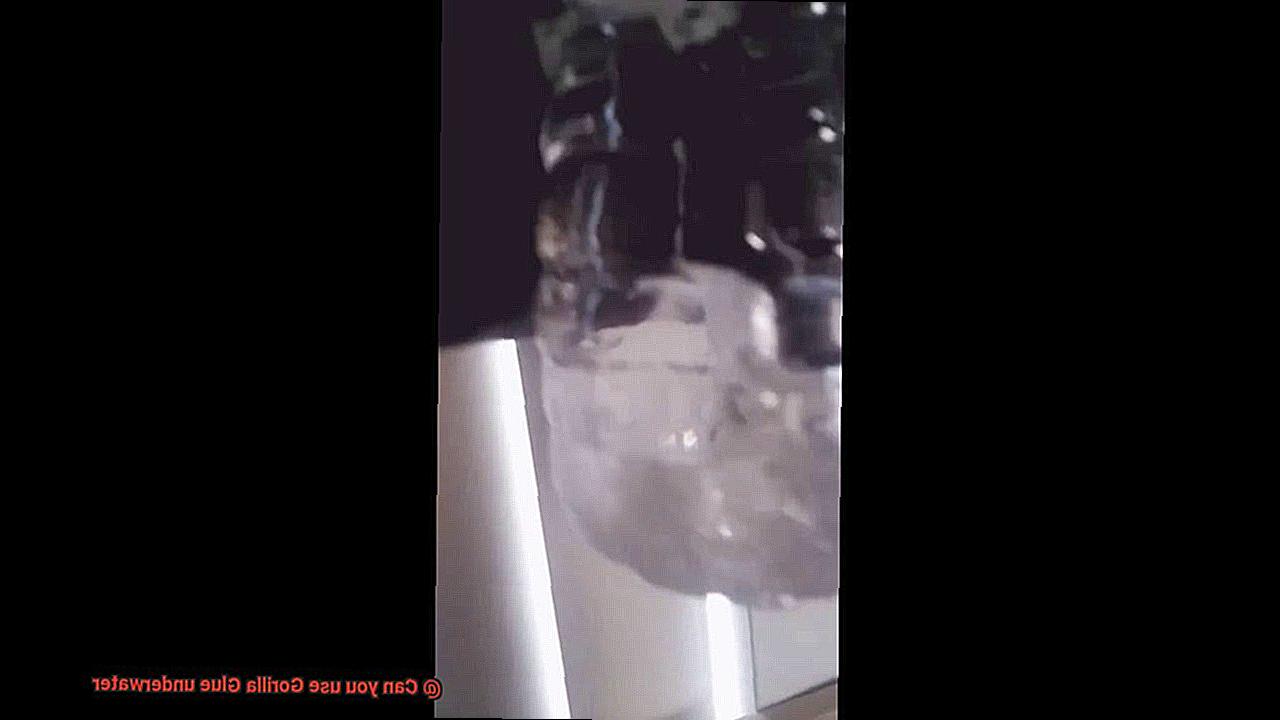
When it comes to underwater repairs or projects, using Gorilla Glue may not always be the best option. While Gorilla Glue is known for its strong bonding properties, it is not specifically designed for use underwater. The glue requires moisture to activate and cure, but being fully submerged in water can interfere with this process.
Fortunately, there are alternative options available for those seeking to bond materials underwater. These alternatives are specifically formulated to withstand the challenges of underwater applications and provide reliable bonding even in wet conditions. Let’s dive into some of these alternatives:
- Marine Epoxy: Marine epoxy is a popular choice for underwater bonding due to its exceptional resistance to water and other harsh environmental conditions. It is designed to create a strong and durable bond on various materials, including metals, plastics, and composites. Marine epoxy typically comes in two parts – resin and hardener – which need to be mixed together before application. This adhesive is ideal for repairing boats, sealing cracks in pool equipment, or securing underwater structures.
- Underwater Repair Putty: Underwater repair putty is a versatile solution that can be used for various underwater repairs. It usually comes in a stick or paste form and can be applied directly to the substrate without the need for mixing. Underwater repair putty is often used for sealing leaks, patching cracks, or fixing broken pipes in aquatic environments. It provides a quick and easy way to fix underwater damage without the need for specialized tools or equipment.
- Waterproof Adhesive Tape: Waterproof adhesive tape is another practical option for temporary or quick fixes underwater. It is typically made from durable materials such as rubber or PVC and features a strong adhesive backing that sticks well to most surfaces. Waterproof adhesive tape can be wrapped around pipes, cables, or other objects to create a watertight seal. It is particularly useful for emergencies or situations where immediate action is required.
- Cyanoacrylate (Super Glue): While not specifically formulated for underwater use, cyanoacrylate, commonly known as super glue, can sometimes provide adequate bonding in submerged conditions. It works by reacting with small amounts of moisture present on the surface of the materials being bonded. However, its effectiveness can vary depending on the specific circumstances and the materials involved. Super glue is best suited for small repairs or bonding lightweight objects underwater.
- Silicone Sealant: Silicone sealant is a flexible adhesive that is widely used for sealing gaps and joints in various applications, including underwater. It forms a durable and watertight seal that can withstand the effects of water, temperature changes, and UV exposure. Silicone sealants come in different formulations, so it is essential to choose one specifically labeled for underwater use. This adhesive is ideal for sealing underwater connections, such as plumbing fixtures or aquariums.
When considering these alternatives, it is crucial to carefully read and follow the manufacturer’s instructions for proper application. In some cases, surface preparation such as cleaning and roughening may be necessary to ensure optimal bonding. Additionally, always consider the specific materials you are working with and their compatibility with the chosen adhesive.
ycLnwJ2Tfec” >
Also Read: Is Gorilla Super Glue Waterproof?
Conclusion
Yes, Gorilla Glue can be used underwater.
Its strong adhesive properties make it a reliable choice for various underwater applications. Whether you’re repairing a leak in your pool or fixing a broken aquarium, Gorilla Glue can provide a watertight bond that withstands the test of time.
Its versatility and durability make it a go-to option for DIY enthusiasts and professionals alike.

